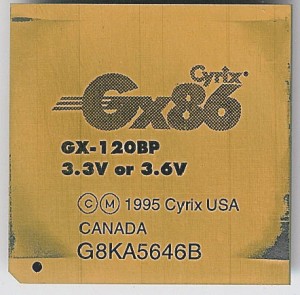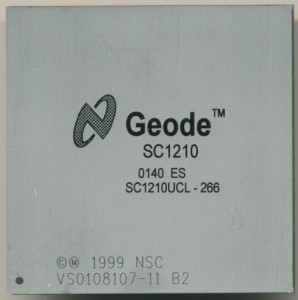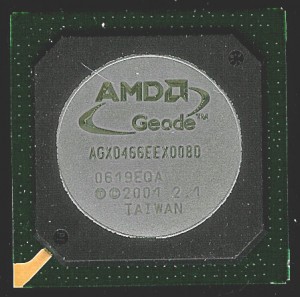Cyrix MediaGX: From Cyrix to AMD – A bit a History
On February 20th of 1997 Cyrix announced the MediaGX processor, running at speeds of 120 and 133MHz. By June of that year they were up to 180MHz as production was ramped at National and IBM (see press release). These processors were based on the Cyrix M1 (5×86) architecture and integrated basic graphics, and audio functions. They were sold as a ‘PC on a chip’ for budget applications, with a bit of a budget performance.
In October 1997 Cyrix announced plans for the Cayenne cored MXi, a follow on to the MediaGX. By 1999 National Semiconductor had made some samples of it, but thats as far as it got. This was also when National Semiconductor bought Cyrix, effectively ending Intel’s lawsuit against Cyrix over x86 licensing as National held an x86 license. The Media GX was bumped to 200 and 233MHz and MMX support was added.
In 1999 National Semiconductor sold Cyrix to VIA of Taiwan, however they retained the MediaGX line and continues to produce it themselves under MediaGX, as well as the ‘Geode’ name. THe MediaGX was far from dead however. Even though mainstream processors were heading towards 1GHz speeds, the MediaGX was still in the 200-300MHz range, more then adequate for lots of industrial computers, as well as TV set-top box style computers.
National continued to shrink the MediaGX process, eventually to a 0.15u process, and in 2003 AMD purchased the Geode line from National and further marketed and enhanced it. Clock speed was boosted to 600MHz while power requirements dropped to the sub-1Watt range. It was used to power the OLPC (One Laptop Per Child) Project. AMD continued to produce and enhance the Geode (GX and LX versions) until 2006 when they transitioned to the Athlon Thoroughbred cored NX version.
All told the MediaGX, based on a souped up 486, lasted for 10 years, and spanned three companies.




